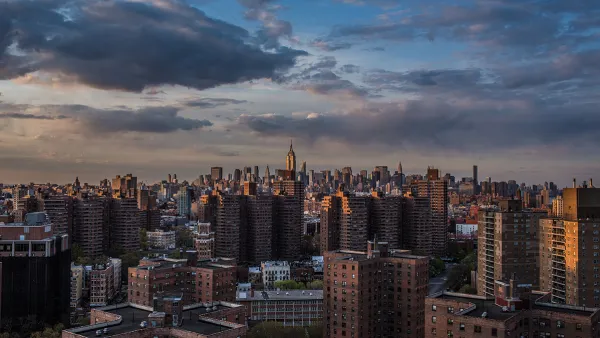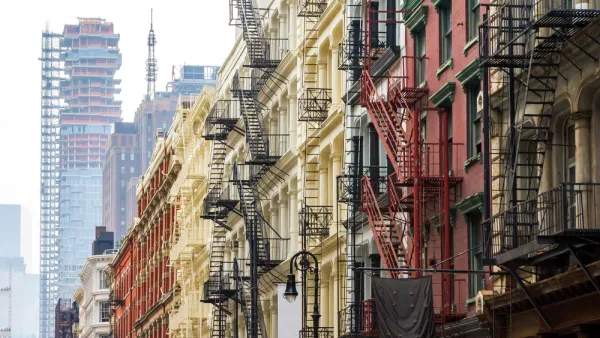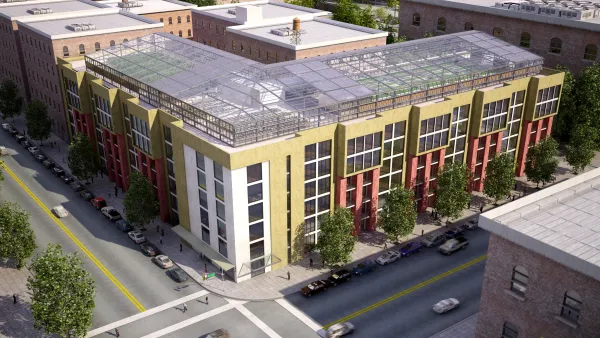First, a new report from NYU's Furman Center details the evolving characteristics of subsidized rental housing in New York City. Second, the results from Mayor Bill de Blasio's affordable housing efforts are in from his first year in office.
A post on the NYU Furman Center's website shares news of a new study: "Housing, Neighborhoods, and Opportunity: The Location of New York City’s Subsidized Affordable Housing (PDF), a report released today by the NYU Furman Center’s Moelis Institute for Affordable Housing Policy, examines changes in the location and neighborhood characteristics of subsidized rental housing in New York City."
"The study shows that the distribution of subsidized rental units across New York City’s neighborhoods changed significantly between 2002 and 2011, not just as a result of new development, but also because of differential opt-out rates across neighborhoods."
The post also notes that over the next decade, "over 58,000 units of subsidized rental housing will be eligible to opt out of affordability restrictions" in the city.
That figure segues nicely into a discussion of Mayor Bill de Blasio's goal to protect or develop 200,000 units of affordable housing over the next ten years, which will encounter challenges like those detailed in the aforementioned report. Andrew J. Hawkins reports that Mayor de Blasio held a press conference this week to announce that "[the] city preserved 11,185 affordable apartments and financed the creation of 6,191 new ones in 2014…"
"The total number for 2014 exceeded the city's projections by about 1,300 and represents 8.6% of the mayor's ultimate goal of 200,000 units over 10 years. The mayor said the city is moving to ramp up preservation and production efforts to around 20,000 units per year."
Hawkins also includes more details about the types of units preserved and created and where they are located.
FULL STORY: Report: High-Opportunity Neighborhoods in NYC are Losing Affordable Housing

National Parks Layoffs Will Cause Communities to Lose Billions
Thousands of essential park workers were laid off this week, just before the busy spring break season.

Retro-silient?: America’s First “Eco-burb,” The Woodlands Turns 50
A master-planned community north of Houston offers lessons on green infrastructure and resilient design, but falls short of its founder’s lofty affordability and walkability goals.

Delivering for America Plan Will Downgrade Mail Service in at Least 49.5 Percent of Zip Codes
Republican and Democrat lawmakers criticize the plan for its disproportionate negative impact on rural communities.

Test News Post 1
This is a summary

Test News Headline 46
Test for the image on the front page.

Balancing Bombs and Butterflies: How the National Guard Protects a Rare Species
The National Guard at Fort Indiantown Gap uses GIS technology and land management strategies to balance military training with conservation efforts, ensuring the survival of the rare eastern regal fritillary butterfly.
Urban Design for Planners 1: Software Tools
This six-course series explores essential urban design concepts using open source software and equips planners with the tools they need to participate fully in the urban design process.
Planning for Universal Design
Learn the tools for implementing Universal Design in planning regulations.
EMC Planning Group, Inc.
Planetizen
Planetizen
Mpact (formerly Rail~Volution)
Great Falls Development Authority, Inc.
HUDs Office of Policy Development and Research
NYU Wagner Graduate School of Public Service





























